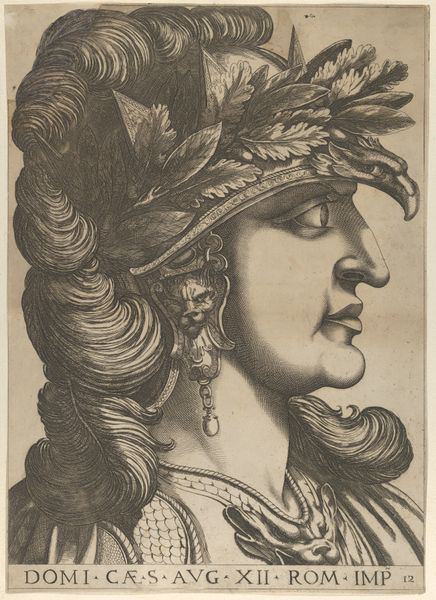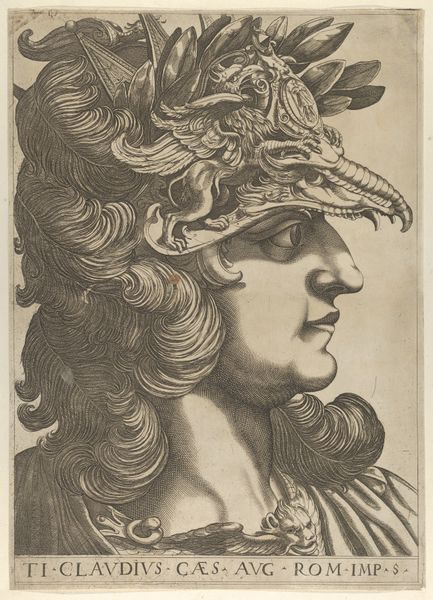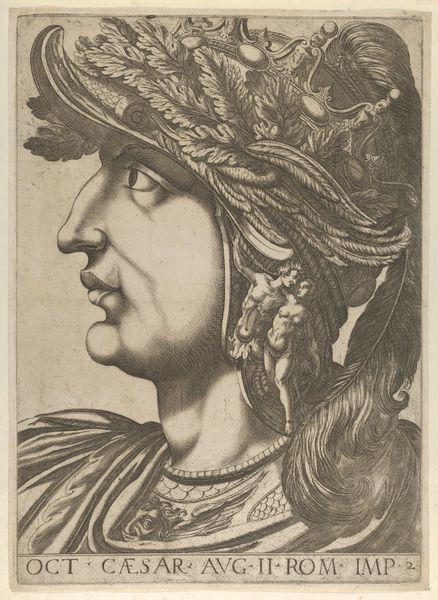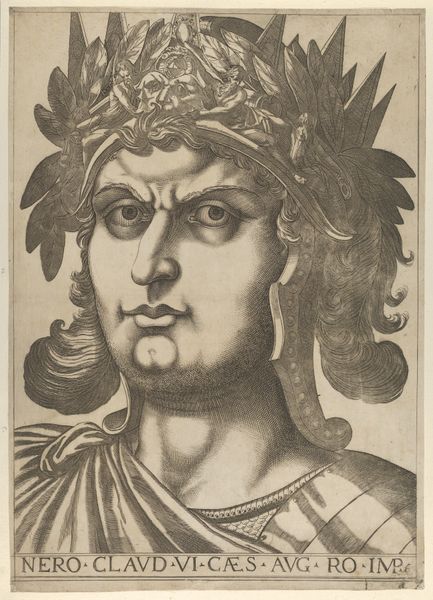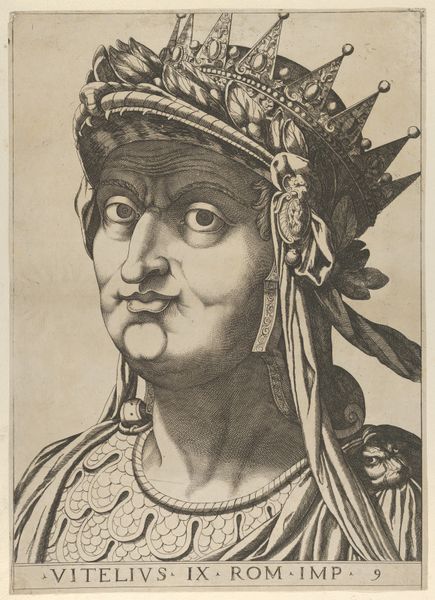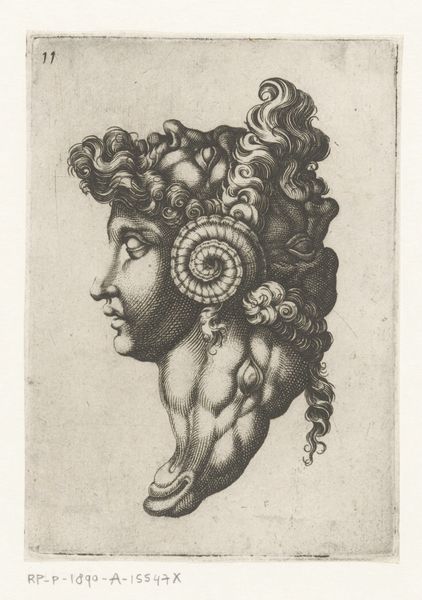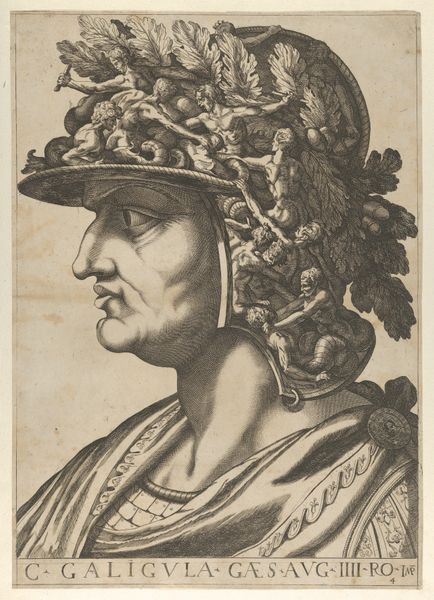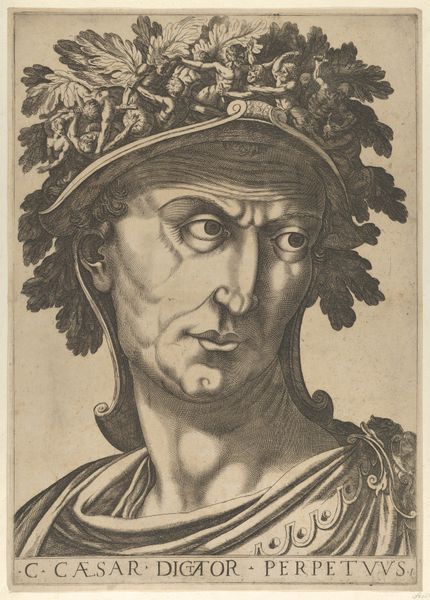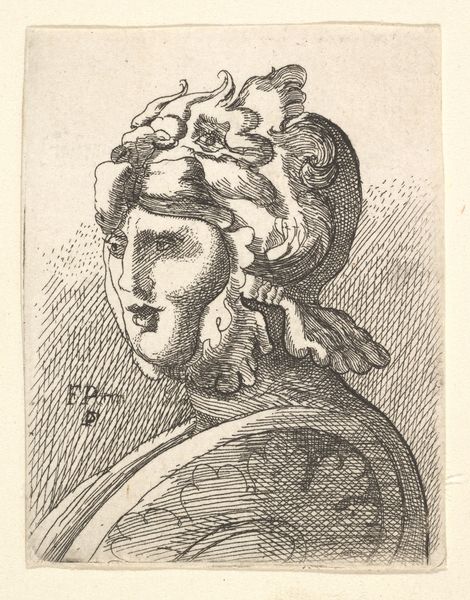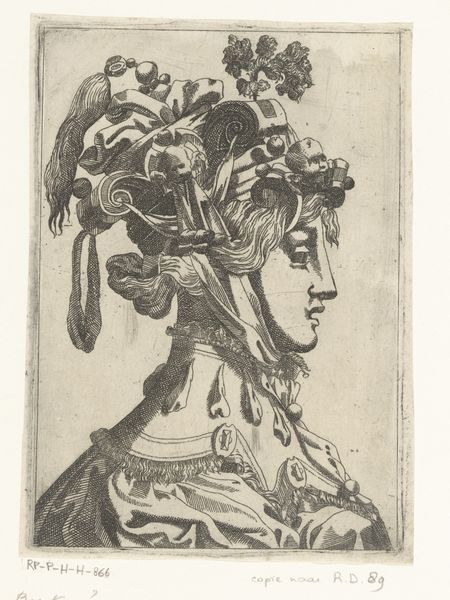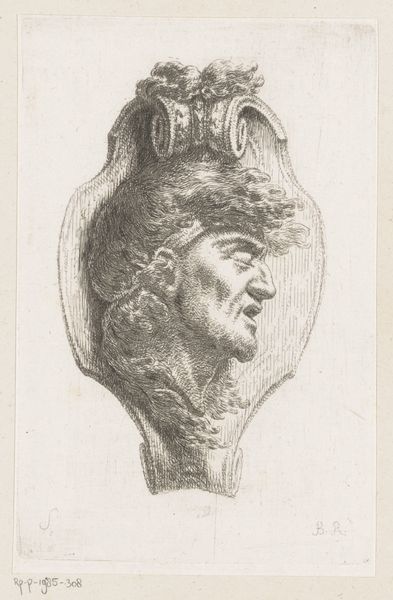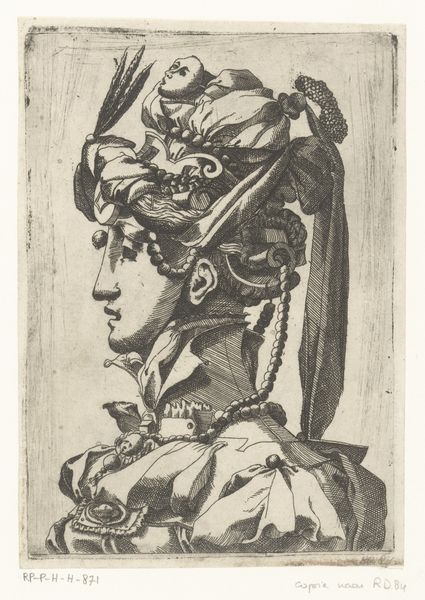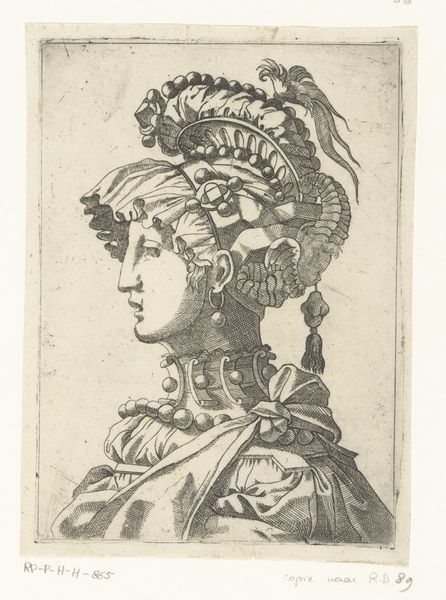
Plate 8: Otho in profile facing left, from "The Twelve Caesars" 1610 - 1640
0:00
0:00
drawing, print, engraving
#
portrait
#
drawing
# print
#
ancient-mediterranean
#
line
#
portrait drawing
#
history-painting
#
academic-art
#
engraving
Dimensions: Sheet (Trimmed): 20 1/2 × 14 5/8 in. (52 × 37.2 cm)
Copyright: Public Domain
Editor: Here we have an engraving dating from 1610 to 1640, titled "Plate 8: Otho in profile facing left, from 'The Twelve Caesars.'" It's anonymous, yet the precision of the lines is striking. What do you make of this portrayal, particularly the emphasis on Otho’s helmet and armour? Curator: What immediately stands out is how this idealized representation of power clashes with the historical reality of Otho’s brief and tumultuous reign. The engraving situates Otho within a lineage of Roman emperors, yet his rule was marked by violence and instability. Do you think this print serves to legitimize a problematic figure, or does it offer something more complex? Editor: That's interesting, I hadn't thought of it that way. I was more focused on the details within the armour, like the small figures engaged in what looks like battle scenes. It seems to be trying to elevate Otho as someone capable to defend himself and his nation. Curator: Indeed. This image, with its references to classical virtue, invites us to consider the construction of power and the manipulation of historical narratives. By studying whose stories get told, and how, we can better understand contemporary struggles for social justice and self-representation. Editor: So, it is a way to delve into the issues of legacy and how figures in power are viewed in different moments in time. The print appears like an innocent portrait at first glance but reveals the historical intersectionality of race, identity, gender, and politics that continue to affect societies today. Curator: Exactly. And by examining the power dynamics inherent in historical portraiture, we can challenge the authority of dominant narratives and create space for marginalized voices. The more one dives into the artwork, the more complex it seems. Editor: It's fascinating how a single image can be a starting point for discussing broader themes of power, representation, and social justice. I'll definitely look at art differently now. Curator: Indeed. Engaging with historical artworks through an activist lens allows us to critically examine the legacies that continue to shape our world.
Comments
No comments
Be the first to comment and join the conversation on the ultimate creative platform.
